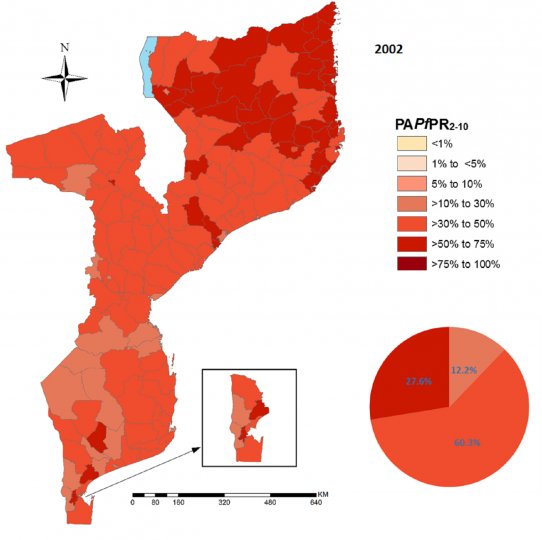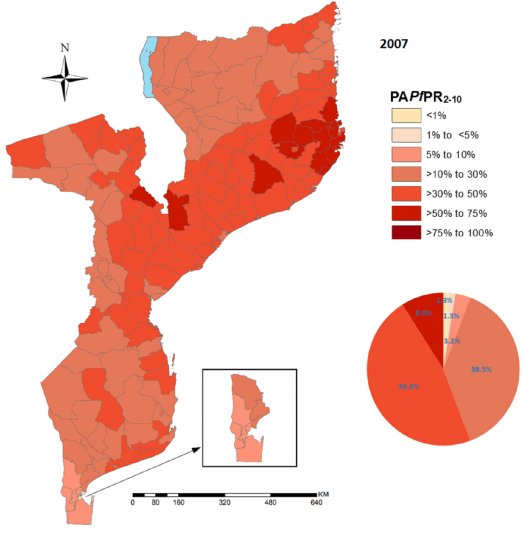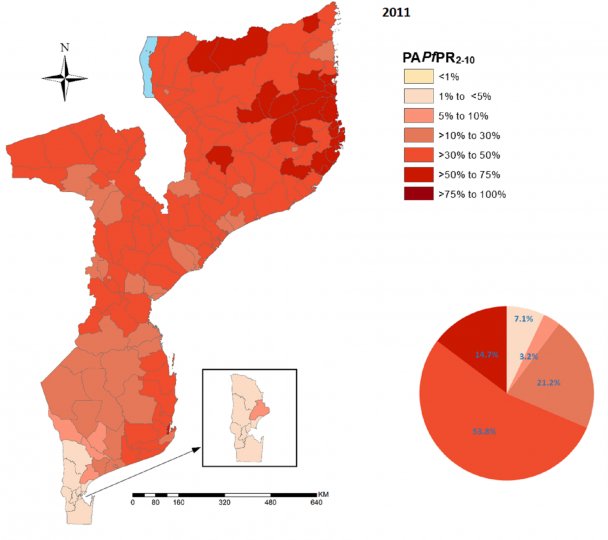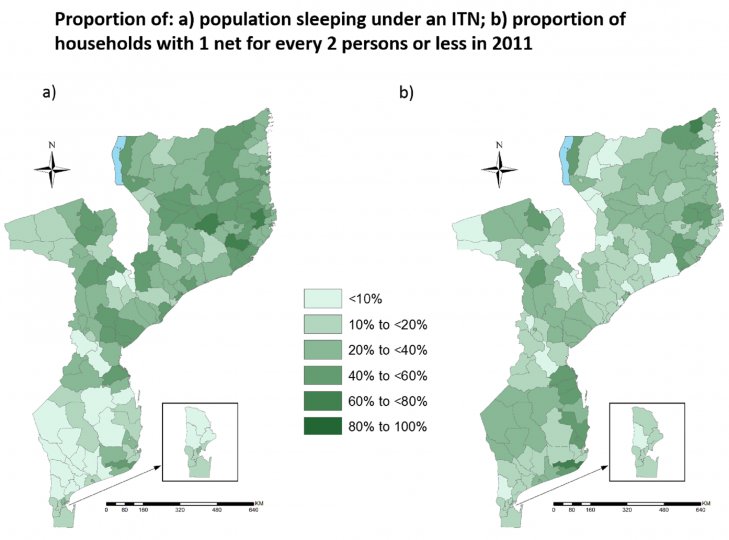Malaria in Mozambique
In Mozambique, malaria is one of the major public health problems. Most of the country is endemic with seasonal transmission throughout the year, reaching its highest point after the rainy season (December to April). Malaria prevalence in rural areas (47 %) is more than double the prevalence found in urban areas (19 %) (AIS, 2011). This wide gap is exemplified by the vast difference of 68% and 66 % in highest burdened provinces of Zambezia and Nampula to 3% and 2% in Maputo, province and city. Malaria is the largest single cause of death in the country (particularly among children) and the main cause of hospitalisation.
Malaria Policy and Strategic Plan 2017-2022
The main aim of the Malaria and Strategic Plan is to reduce the prevalence of malaria in the country from the current figure of 40% to 24% by 2022.
Bednet coverage total household population
Overall, 66% of households have at least one ITN. This result represents an increase of 16 % compared to DHS 2011 results.
With regard to universal coverage, 39% of households have at least one ITN for every two person’s resident. Despite this important increase (AIS [AIDS indicator survey], 2015). Coverage remains below the 100% target set by the Ministry of Health (Ministere de Saude - MISAU).
LINK activities
Making data available
During Phase 1 in 2014, an epidemiological malaria control profile, historical timeline and malaria indicator poster were produced for Mozambique in collaboration with the National Malaria Control Programme (PNCM). Along with the PNCM and partners, the team assembled community-based surveys of malaria parasite prevalence from sources including: peer-reviewed journals, international and national MISAU and academic archives, and national household survey data. One thousand and twelve malaria prevalence surveys undertaken between 1982 and 2013 were also identified. All these data were collated and analysed to help produce the modelled malaria maps and graphs in the profile.
As part of Phase 2 work LINK collated evidence from 164 published articles or MSc/PhD theses and 48 implementation reports/policies. LINK worked with the PNCM on Phase 2 of the project holding a series of meetings with the PNCM and other partners during 2018 culminating with the production of a timeline presented at the dissemination meeting in August 2018.




